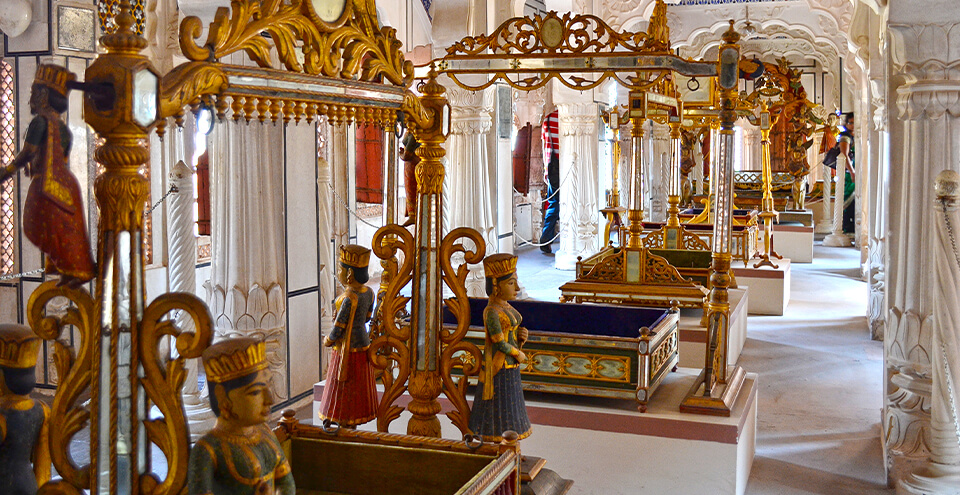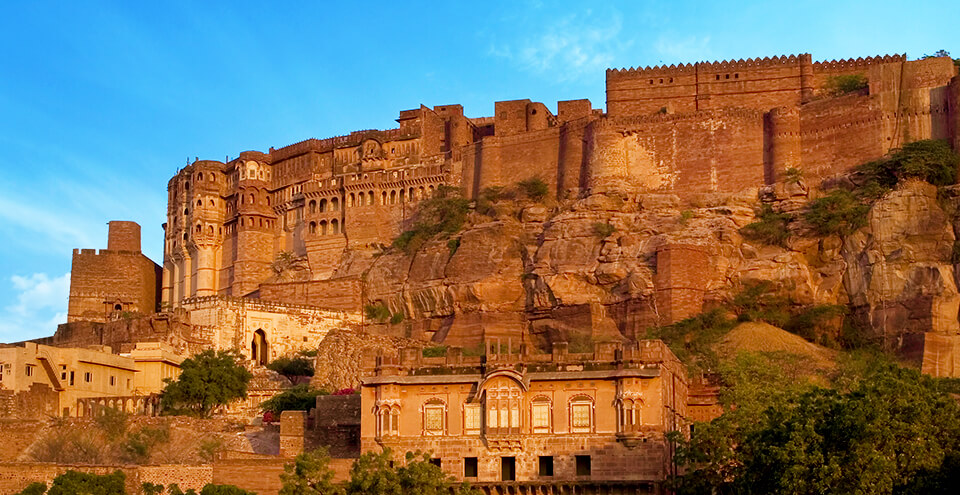Best Points

BALSAMAND LAKE
Balsamand Lake is about 5 kilometres from Jodhpur on the Jodhpur-Mandore Road. Built in 1159 AD, it was planned as a water reservoir to cater to Mandore. The Balsamand Lake Palace was built on its shore later as a summer palace. It is surrounded by lush green gardens that house groves of trees such as mango, papaya, pomegranate, guava and plum. Animals and birds like the jackal and peacock also call this place home. This lake is now a popular picnic spot with tourists and locals.

GUDA VILLAGE
Guda, a Bishnoi village, is home to a vivid range of exotic wildlife and nature. It is a habitat for thousands of migratory birds in the area. One can often catch the Demoiselle crane frolicking at the lake. Antelopes and black bucks can also be spotted by the pond. This place is a must-visit for nature lovers.

MEHRANGARH FORT AND MUSEUM
Mehrangarh, the fort of Jodhpur, crowns a rocky hill that rises 400 feet above the surrounding plain and appears both to command and to meld with the landscape. One of the largest forts in Rajasthan, it contains fine palaces and preserves in its museum many priceless relics of Indian courtly life. Jodhpur is named after its founder Rao Jodha, a fifteenth-century chief of the Rathore clan. In 1459, Rao Jodha (r. 1438-89) began to build a new fort six miles to the south of Mandore, his then capital. A strategic location was chosen for the new fort: an isolated rock providing high elevation and good natural defenses. The fort was named Mehrangarh, meaning ‘fort of the sun’ – a reference to the clan’s mythical descent from the Sun god ‘Surya’. Over five hundred yards long, the fort wall is seventy feet wide and rises in places to a height of one hundred and twenty feet. Today Mehrangarh Museum has a unique importance as a repository of the artistic and cultural history of the large areas of Central Rajasthan and Marwar-Jodhpur. The museum boasts exemplary examples of 17th, 18th and 19th-century collections for the fields of Miniature Paintings, Arms and Armours, Textiles, Decorative Arts and Furniture. The Museum has also participated in many international exhibitions all over the world, displaying and sharing the rich heritage of Marwar, and interacting with prestigious institutions in the field.

CHOKHELAO BAGH AND INTERPRETATION CENTER
Visit the Chokhelao Bagh which sits at the foot of the Mehrangarh Fort. This over two hundred-year-old garden, complete with the scents, sounds, and textures of a garden of the eighteenth century Marwar has been turned into a Botanical Museum by the Mehrangarh Museum Trust by planting and in-situ displaying, exquisite endemically historic flora of Marwar region. The garden today, as in the past, is truly a celebration of nature as it captures the changing colors of the seasons in the upper terrace of flower beds. It is equally magical for night viewing when the Mehtab Bagh or moonlight garden laid out in the lower terrace comes alive with the white flowers ofchandni(Tabernaemontana coronaria) and the sweet- smellingkamini(Maurya exotia). Visit this gem of a garden and carry back the sensuous experience of eighteenth-century Rajput garden.

No comments:
Post a Comment